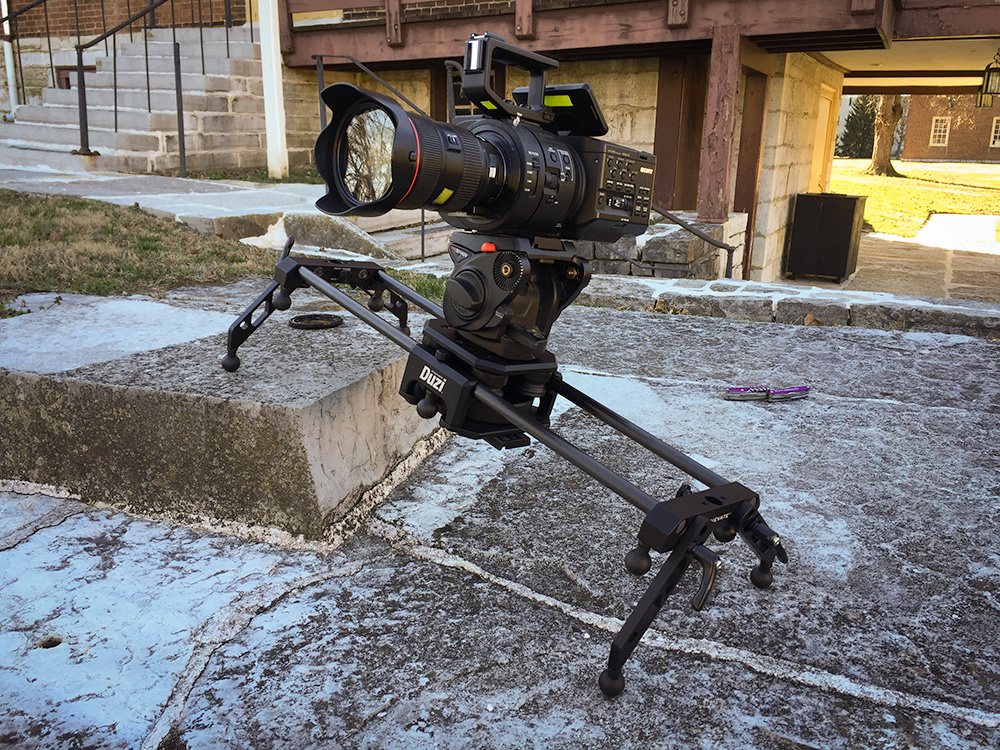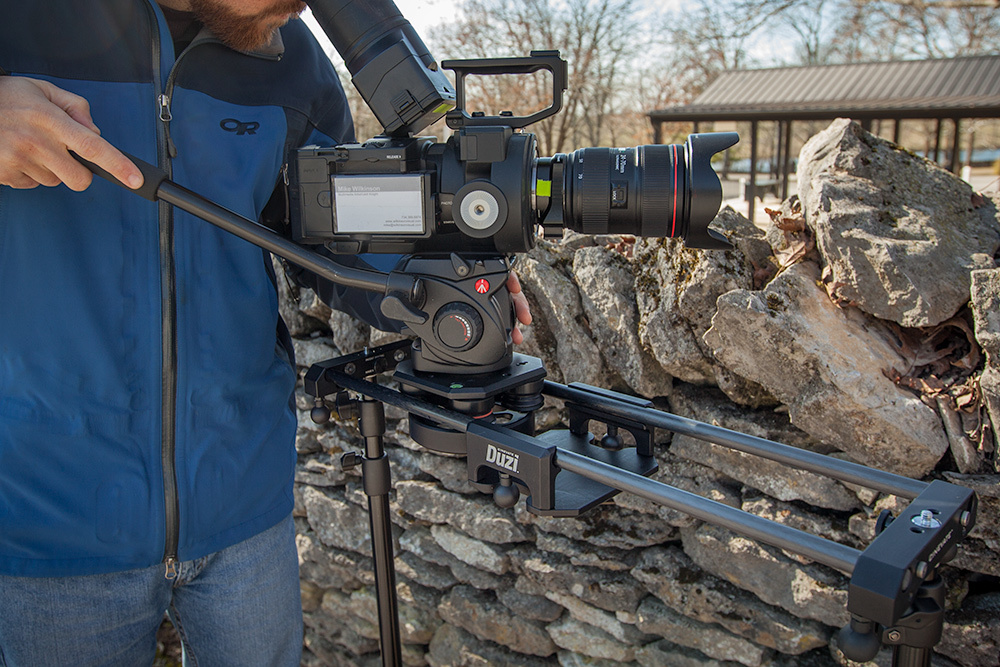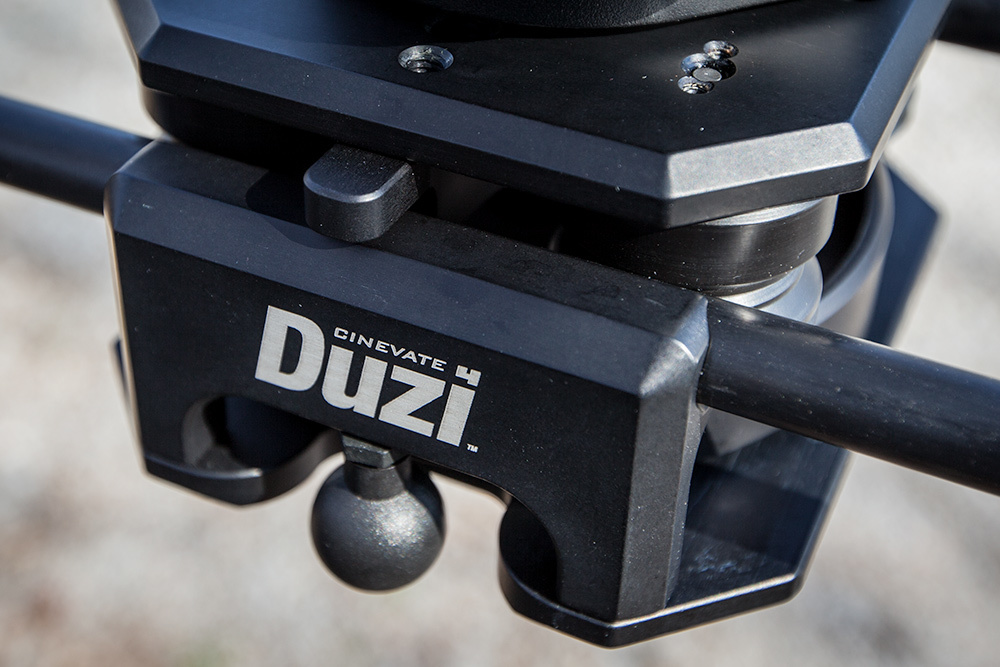Camera sliders are often one of the first accessories that independent filmmakers purchase, just after a tripod and microphone. The simplicity in their design and valuable ability to create subtle motion instantly add production value. Cinevate recently updated its Duzi slider to its fourth version, and I got a chance to review one this past week.
The Duzi slider captures smooth dolly footage that users are looking for, but it does so in a way that I haven't ever seen implemented before. In this review, I’ll dive into their flywheel system and will go over other details that make this slider a unique entry into the market.
First of all, here’s a video montage of clips captured with the Duzi v4 to provide a few samples for reference. The camera used was a Sony FS700 with various lenses.
I was able set up reasonably fast and execute a few different kinds of shots. I did a few basic lateral slides, but on certain clips also separately incorporated a focus pull, a tilt, a push in move, and did a couple of angled shots as well. Even with only a 24" rail length, the duration of the final clips was still acceptable for me and would be for most projects I work on.
Build Quality
The aluminum Duzi v4 can handle DSLR-sized cameras, but where it really shines is in its ability to wield heavier rigs. Its base is wider than most other sliders and offers a more stable slide through its patented flywheel system. What’s a flywheel? Glad you asked.

A flywheel system uses a spinning wheel to stabilize the sliding motion across the rails. This helps to smooth minor shakes or bumps. It also adds a small amount of resistance, which creates smooth ramps in and out of your slide move. A byproduct of this kind of system is inertia, so the cart almost seems to pull itself along once you get it going. While other sliders might have belts, cranks, and pulleys mounted outside of the slider, the Duzi has these components (minus the crank) contained within the cart. I didn’t really understand what all this meant until I used it for the first time, and immediately I could tell this would be the smoothest slider ride my camera has ever taken.
If that doesn’t dill your pickle, then know that the flywheel is removable, so you can slide the cart by hand without the inertia or resistance. One reason you might want to do that is to cut down on weight.
In the Field
The 24” Duzi v4 only weighs another pound over a popular competing brand (rhymes with tressler) slider of the same size, and it is a little bulkier. For the shots in the video above, I hiked around a historic village, and it was a bit unwieldy at times. That doesn’t make it a bad slider; it just means that it might not the best choice for you if you plan to do most of your slider shots in the field, carrying all of your gear around for the day.

On its own, the Duzi has threaded ball feet for leveling on mostly flat surfaces. There are accessory feet they sell separately called, “All-Terrain Legs.” These conveniently screw in (toolless!) and allow for balancing on varied terrain.

The legs worked great, and they fold up for transport so they don’t stick out as much when packed. My only complaint about these legs is that they are $125 extra, so $30 each for a small piece of machined aluminum? Seems a bit pricey, but I’m glad they don’t just include it as standard and inflate the base price, because not everyone will need to use a slider like this in an outdoor setting.
Studio Use?
I could really see the Duzi v4 finding a home in a studio setting, using the 36” with heavier studio cameras to get buttery, baby’s bottom smooth shots of people or products. As with most sliders, the Duzi offers threads for attaching two tripods at each end, but it also has large holes for placing it on C-stands! This is awesome, and again, perfect for studio use.
You can see here that I tried to use two stands to support the slider, but I was on very uneven terrain, so this wasn’t a very stable setup.

The Brake
You can lock the cart anywhere on the rails, which is great. The Duzi cart has a small lever that you push to the right to lock, then left to release. I found the lever to be a little tricky to use, even though it's so simple. With a heavy camera rig, if I gave it a little force to the left when the brake was applied, the brake would release the cart. I found myself a little unsure to trust it when using the Duzi for an angled move like the one in the second photo below. I'm sure with more use I'll get comfortable with it, but I do wish it sort of "clicked" or locked in somehow.


Motion Control
Upgrading to a motion control accessory is an important consideration if you’re serious about your production and want to invest in a product that is versatile in that regard. Cinevate does offer a product called, “Modo,” which is a unique approach to motion control that doesn’t use any batteries, cables, or controllers – cool when you need to get a timelapse in a hurry, but maybe not ideal for something you need to be absolutely precise. It also only seems to support rigs up to about eight pounds and has some other restrictions. It would be worth looking into if you feel that you might get into motion timelapses. Cinevate tells me that they are looking into other motion control options for the Duzi v4, but as of now there's nothing to report.
What I Liked
- Smoothest slider I’ve ever used thanks to the flywheel
- Can handle heavy rigs
- Holes for C-stands are awesome
What Could Be Improved
- Weight and bulk make me question carrying it into the field
- All-Terrain Legs are overpriced
- More secure, less finnicky brake
Conclusion
The Cinevate Duzi v4 sells for $459 for the 24” version and $489 for the 32” model, which is competitively priced in the slider market, right alongside other popular, proven brands. What sets it apart is the integrated flywheel, which, as I noted, gives a very smooth move. If you don’t mind a bit more bulk to your slider, then it would be worthwhile for you to check out, especially if you plan to use it in a studio more often than not. The feel of the inertia is really cool and opens up opportunities for slide moves that would otherwise not be possible.







I have the OG Duzi (going on 3 years now) and I still use it regularly, but I tried this new one last month and it is SO much smoother and easier to control.